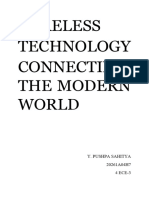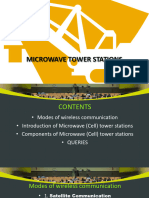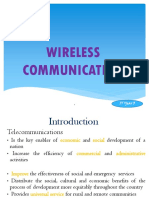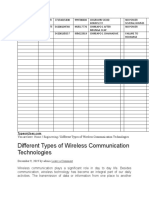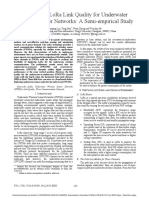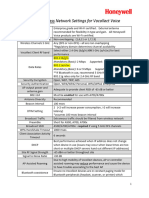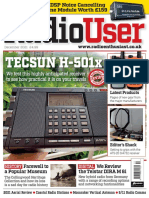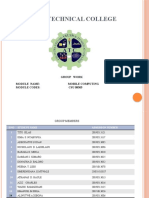0% found this document useful (0 votes)
4 views5 pagesWC Unit 1 Notes
Wireless communication refers to the transfer of information without wires, utilizing electromagnetic waves like radio, microwaves, and infrared. Key types include radio communication for broadcasting, microwave for long-distance links, infrared for short-range devices, satellite for global connectivity, Bluetooth for personal device connections, Wi-Fi for internet access, and mobile communication across cellular networks. Each type has its advantages and limitations, impacting its application in daily life and technology.
Uploaded by
Swarangi AherCopyright
© © All Rights Reserved
We take content rights seriously. If you suspect this is your content, claim it here.
Available Formats
Download as DOCX, PDF, TXT or read online on Scribd
0% found this document useful (0 votes)
4 views5 pagesWC Unit 1 Notes
Wireless communication refers to the transfer of information without wires, utilizing electromagnetic waves like radio, microwaves, and infrared. Key types include radio communication for broadcasting, microwave for long-distance links, infrared for short-range devices, satellite for global connectivity, Bluetooth for personal device connections, Wi-Fi for internet access, and mobile communication across cellular networks. Each type has its advantages and limitations, impacting its application in daily life and technology.
Uploaded by
Swarangi AherCopyright
© © All Rights Reserved
We take content rights seriously. If you suspect this is your content, claim it here.
Available Formats
Download as DOCX, PDF, TXT or read online on Scribd
/ 5


















